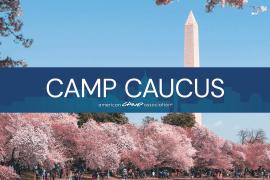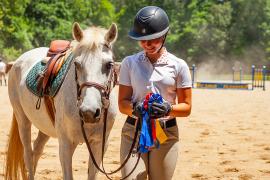What's the most popular program at American Camp Association camps? Waterfront activities! That's why at RAVE Sports, the most common questions we receive from Camp Directors and Waterfront Directors are related to upgrading waterfront programs that will provide value to activities and energize programming.
There's a big difference between offering a supervised swimming area and offering a complete waterfront program with multiple activities that encourage campers to push their limits, learn new skills, build friendships, and gain confidence. Aquatics activities can go beyond swimming to include snorkeling, waterskiing, wakeboarding, knee boarding, paddle boarding, tubing, inflatable aqua park courses, canoeing and kayaking, sailing, and so on. To address these questions and narrow down wide-ranging possibilities, take these five steps to successfully energize your waterfront:
Evaluate camper water skills
To curb so many choices, start by defining the water skills of your campers. For example, if your campers are mostly young non-swimmers and beginner swimmers, programming should be tailored to activities that encourage getting into the water and simply having fun. These activities will reward being adventurous and encourage them to be more comfortable with advancing their swimming skills. On the other hand, if your camp serves many pre-teens, teens and adults with swimming and more advanced athletic skills, offering activities that push the limits and expand their water fun is perfect.
Identify your camp's programming goals
Is it important to attract new campers and keep existing campers coming back by offering cutting-edge amenities and upgrading programming? Or would you like to generate new revenues by offering a pay-to-play day camp program? Clearly defining your goals will put the project on a straight and narrow path when you set out to upgrade your waterfront programs.
Assess your space, waterfront environment, staffing resources, and number of campers
Your waterfront programs need to fit your beach length, water depth and terrain, sun angles during peak season, beach area, location of lifeguard stations, etc. In this case, bigger is not necessarily better … better is achieved by optimizing the space you have to work with, both in the water and on land. Also consider the additional staffing resources that instructional programs (how to paddle board, for example) will require beyond basic lifeguarding certifications. The nuances of your new programming will not be successful if you don't also recruit for their unique staffing requirements. The number of campers using your waterfront in peak season will also determine the kind of waterfront activities you can reasonably offer. Teaching how to waterski, for example, requires a high ratio of staff to campers and will work for camps with lower numbers, while an inflatable aqua park course requires a lower staff-to-camper ratio and is best for higher numbers of campers.
Create different activity zones so there's something for everyone
A shallow zone with a small inflatable aqua park course and water mats will encourage younger beginner swimmers to dip their toes in the water, while a deep zone with a Ninja Warrior-style course offering multiple challenges will keep campers with swimming skills entertained for hours, and another water sports zone for paddle sports and boat-related sports will offer lots of fun to the most adventurous campers. For your waterfront programming to provide the most value, it should offer multiple activity zones that address all water skill levels.
Plan for a phased-in approach if needed
Most camps operate their programs within the constraints of an annual budget or endowment. When it is well-planned with a phased-in approach, a small upgrade to a camp's waterfront will provide a big bang right away and will continue growing as multiple phases are implemented as budgets allow.
The wide-ranging demands of waterfront management include staffing, budgeting, training, safety, risk management, facility maintenance, and programming. It can be daunting, difficult, and time consuming, but that's why it is also one of the most important job functions at a camp. And, that's why it is probably one of the most rewarding — observing the joy that a camper gets from learning how to wakeboard, winning a race through an inflatable obstacle course, or strengthening confidence and friendships through free play and splashing in the water make it all very worthwhile.
The views and opinions expressed by contributors are their own and do not necessarily reflect the views of the American Camp Association or ACA employees.



